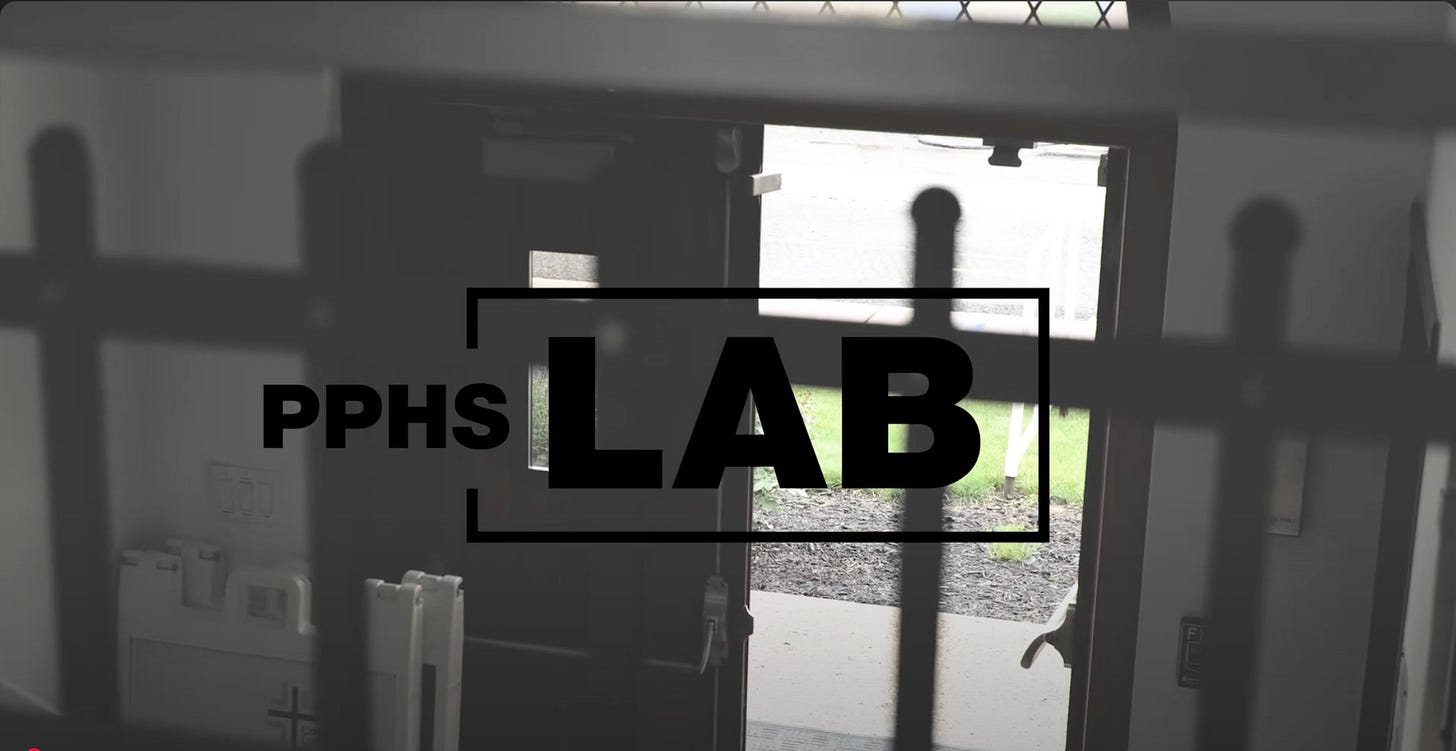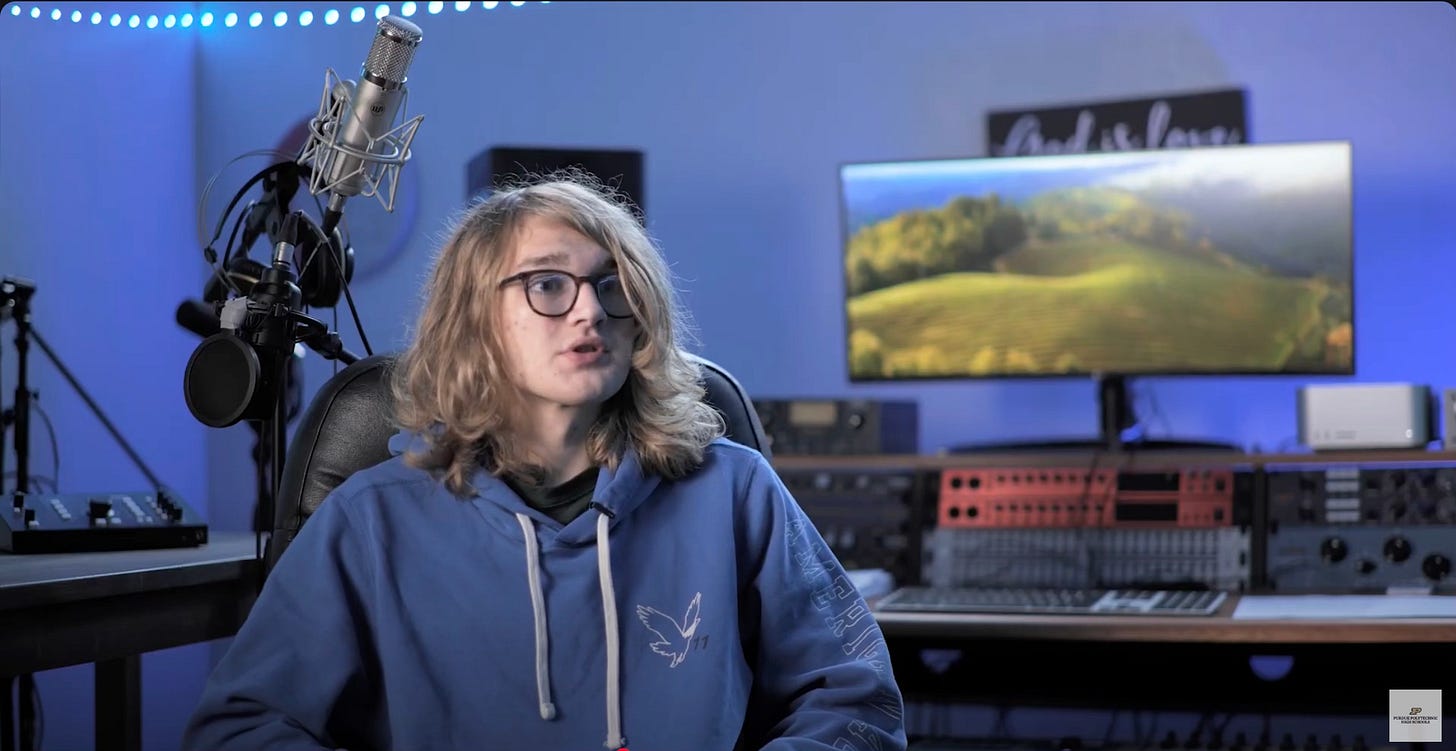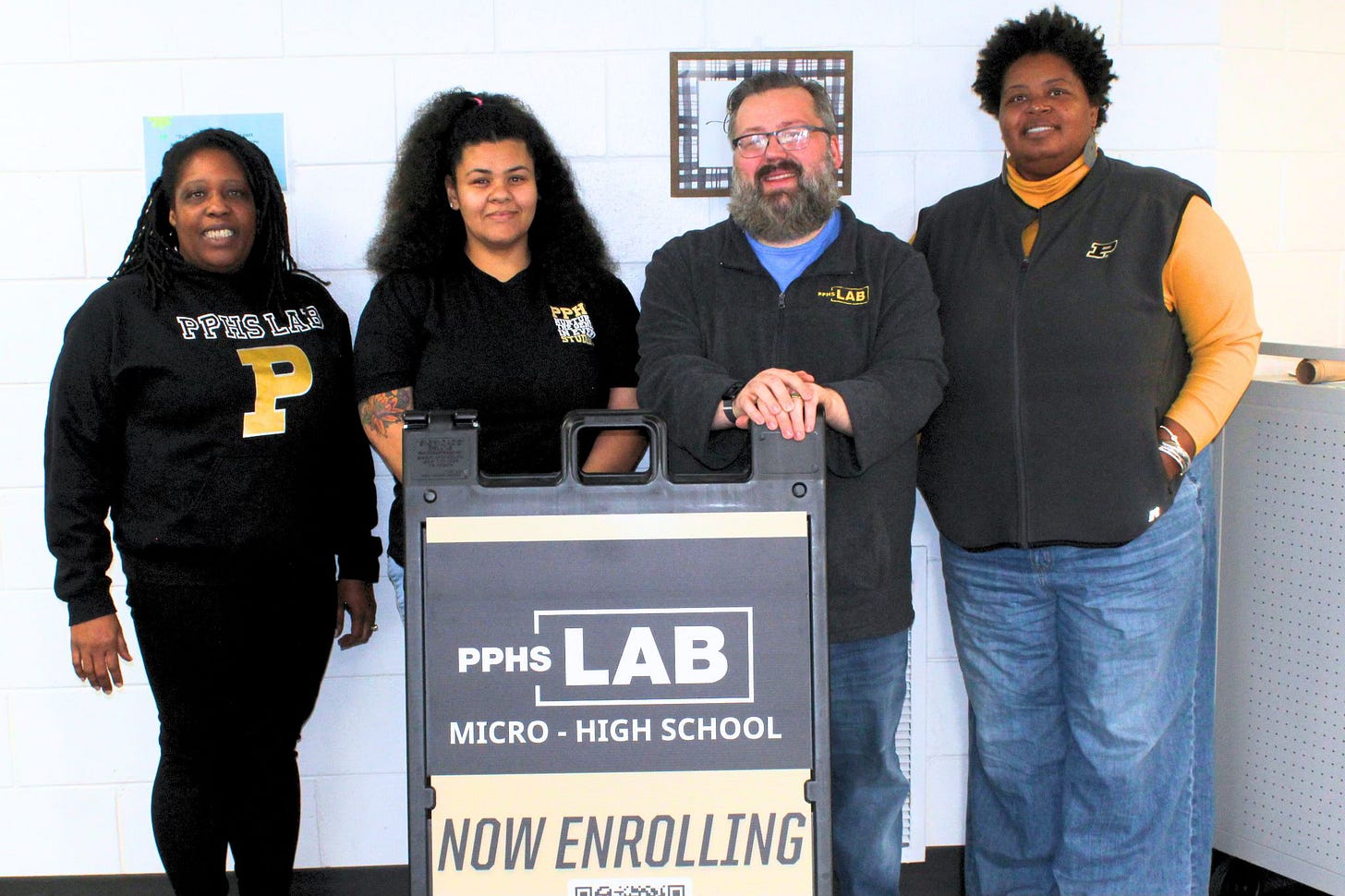In Indianapolis, An "Adventure in Magnitudes" is Reshaping the Future of School
And reminding us that bigger is not always better . . .
There’s a funky old video from 1977 called Powers of Ten that bills itself, quite accurately, as an adventure in magnitudes.
Produced for IBM by the creators of the Eames Chair (like I said: it was the 70s), the film takes the viewer on a comprehensive nine-minute journey -- first out, then in -- of the known universe.
All of it.
Beginning at a picnic by the lakeside, the camera pulls out ten times farther, ten seconds at a time, until our own galaxy is barely visible. Then it reverses course, and upon our return we enter the hand of the sleeping picnicker, advancing with ten times more magnification until our journey ends inside a proton of a carbon atom within a DNA molecule in a white blood cell.
It’s quite a trip -- one I was reminded of last week, when, as part of my yearlong exploration of twelve sites across the United States that are seeding “learner-centered ecosystems,” I entered the basement of a neighborhood church in Indianapolis and learned more about the four adults there who are attempting to seed something that could, in time, subvert the conventional thinking about what it means to bring a good idea ‘to scale.’
Welcome to The Purdue Polytechnic High School Lab, and the world of microschooling.
What’s a microschool, you ask?
It’s a model for innovation that’s growing rapidly across the United States, so much so that there is now even a National Microschooling Center, which estimates there are already more than 120,000 such places, educating as many as two million students.
As the Center’s 2024 Sector Analysis shows, the median number of students in a microschool is just sixteen. Typically, they convene in commercial spaces, private homes, or places of worship. They can be organized as homeschools, public schools or private schools, accredited or unaccredited, one-offs or networks. And although their rate of growth has become a notable new development in American education, they’re not exactly new (one-room schoolhouse, anyone?). But as the Center’s Don Soifer puts it, “they’re still in their early adoption phase, so it’s crucial that policy and regulatory frameworks adapt and don’t restrict microschools from realizing their compelling, transformative potential.”
That potential is what attracted Lacey Beatty to start spending her days in an Indianapolis church basement. A lifelong educator with a warm smile and contagious energy, Beatty was part of the founding faculty of Purdue Polytechnic (PPHS), a new charter high school developed in partnership with the university, the city, and the state to raise the number of students from underrepresented backgrounds pursuing STEM careers.
It was, as she put it, “a big bet, and a new way of organizing the school day. Every eight weeks, students choose a different learning pathway and work with local and regional industry partners. They can also take classes and earn dual enrollment credits at Purdue and other local colleges.” And today, by all accounts, PPHS is a runaway success -- so much so that it has now spread across three campuses, two cities, and 900 students.
How should such a network keep growing?
In what direction should its adventure in magnitudes point?
In the past, there was only one answer: add more students to the campuses you have, or open another big school. But for Beatty, microschooling illuminates a different way forward. “Different kids thrive in different contexts,” she explained. “So if we’re serious about creating a true ecosystem, the more shapes and sizes we can offer kids for their learning environments, the better.”
To that end, the PPHS Lab is part of the Purdue Polytechnic network. But unlike those other campuses, it has just twenty-five students and three full-time staff (Beatty works across all the schools). “I believe microschools are a powerful force for educational freedom,” explained Dr. Keeanna Warren, who oversees PPHS. “They are the truest form of community schools, built in partnership with local community members. This grassroots foundation ensures that microschools prioritize inclusivity and access, and contribute to the creation of a different sort of city-wide network: a meshwork of learning hubs, field sites, and community partners in which some are big, some are small, and some are really small.”
When I arrive, one of The Lab’s students, an earnest sixteen-year-old named Nat, takes me on a tour. Six of the school’s kids serve in an ambassadorial capacity -- giving tours, recruiting other students, and providing an extra hand whenever necessary. Nat is one of them, wearing her gold ambassador’s name pin like a medal, and walking us around a building that contains a much bigger footprint than I had originally imagined.
There are square cinder block rooms for each of the Lab’s advisories -- the primary organizing principle of the school. But there is also a music room and a recording studio -- features that provided the primary selling points for Richard, a taciturn ambassador-in-training with long dreads dyed blue at the tips. “At first I came here because it was a pathway to the main campus,” he explained. “I’ve stayed because of the studio” -- Richard is an aspiring rapper -- “and because I’ve just found myself more motivated than before.”
After the tour, Nat takes us to the room of her advisor, Jeff Edge, a jovial spirit who has transformed his windowless setting into a cozy familial corner, with a leather couch, reading chair and rectangular work tables. A floor lamp, its shade slightly crooked, provides the only illumination, along with a string of white holiday lights that are hung around the edges of the room’s chalkboard.
“We like the place we’ve created here, but our main goal is to get them out of the building at least two days a week,” Jeff explains. “We were inspired by the work they’ve been doing at The Met in Providence or the Fannie Lou Hamer School in the Bronx -- places where the whole point is “leaving to learn,” and the adult’s job is to connect them to the right community partners and learning opportunities. And I know it’s just year two here, but we’re already doing a good job of letting kids feel connected to something larger than themselves.
“The challenge going forward,” he added, “is creating more professional pathway opportunities -- and increasing both our reach and our impact. These kids need to be exposed to all the different ways they could choose to spend their lives after they graduate.”
While we’re speaking, a student named Luke volunteers his perspective. “The hardest part of going to school here is holding yourself accountable,” he says, intelligent eyes peering out from behind a pair of black glasses. “You’re left to your own nature here. There’s no hiding from it.”
For Luke, it’s exactly what he wants and where he wants to be -- so much so that he’s willing to travel almost two hours each morning to get here. “At my previous school, I was miserable and unmotivated. It was toxic. I was suffocating, and I couldn’t improvise at all. But now I know what I like, and where I think my future will be.”
Luke knows this because he has spent the past year-and-a-half apprenticing at a local business called Horner Automation. At first it was just job shadowing, but then Luke emailed them — of his own accord — to see about an internship. “We learned quickly that Luke was willing to try different things,” explained Ken Jannotta, Horner’s Manager of Global Engineering. “That’s important, because it meant he could bring fresh ideas to us as well.”
I asked Jannotta to say more about what Luke -- and any other prospective intern -- could meaningfully contribute to such an established business. “Luke’s curiosity and eagerness to learn has allowed a lot of people on our staff to grow,” he responded. “Engineers can be pretty introverted, after all. But we also use interns for testing a new product because they’ll do or see things we didn’t expect. That helps us think outside the box. And now that we’ve done this for awhile, we have a list of tasks that could work for other interns in the future.”
In the end, though, The Lab’s ability to foster meaningful connections is just as important as its schedule of hands-on experiences. “What makes our environment different is the depth of our 1:1 work,” explained advisor Tamika Riggs. “We can guide them and anticipate their needs before they even know they have them. And we can feel the impact we’re having each day. This environment prepares students to be adults. It gives them an opportunity to lead and to share their thoughts, to be challenged by other people’s thoughts, and to manage their own time.”
In this regard, in their ongoing efforts to cultivate a worthy system of schools, cities like Indianapolis are beginning to discover that the best solution may not be to go bigger or smaller -- but to do both.
“The last few decades have shown us that there’s no one-size-fits-all answer for American public education,” Riggs added. “Comprehensive high schools can do some amazing things, and they work really well for some kids. But this model helps us rapidly adjust in a way they cannot, and it speaks to a type of kid who might otherwise fall through the cracks.
“It’s a different sort of scale that we’re working with -- one that is more human-centered, we hope, and more humane.”
I am proudly partnering with Education Reimagined this year to author profiles of the twelve communities they are working with to establish learner-centered ecosystems — including Indianapolis. To learn more, visit https://www.gettingsmart.com/2024/10/31/a-system-that-supports-all-learners-ecosystems-could-be-the-answer/.








That old video is fantastic. Creating schools yes is about a long view. Learning is so much about "Perspective."